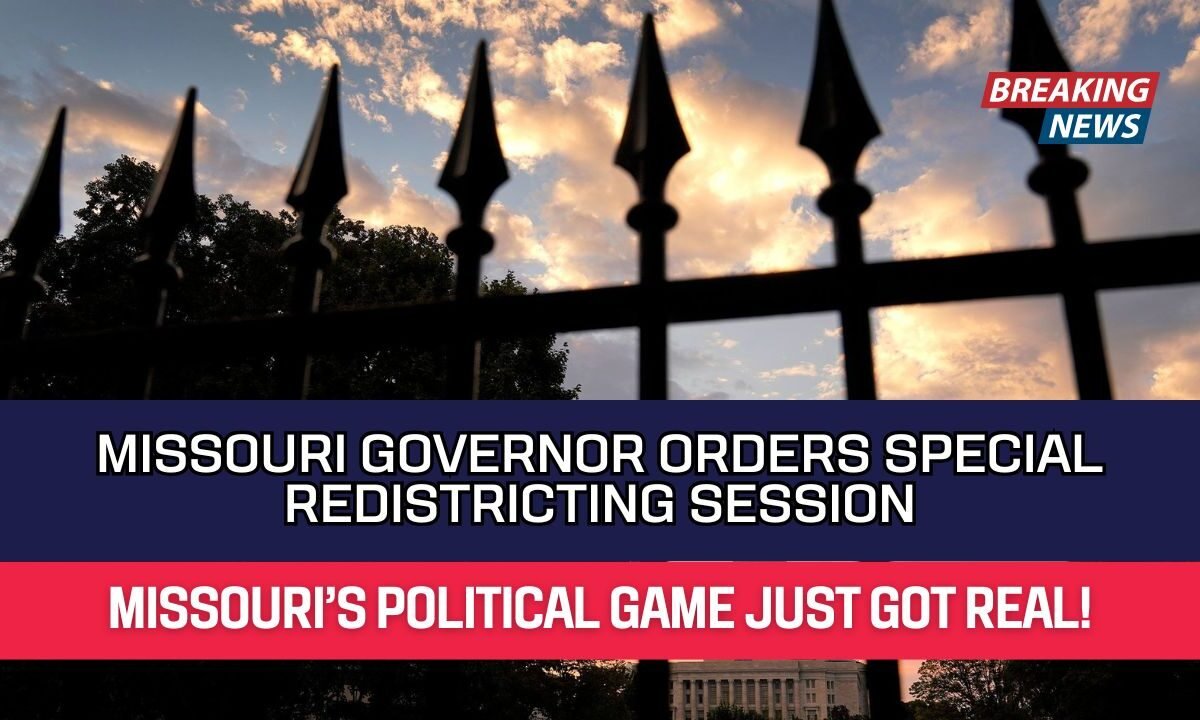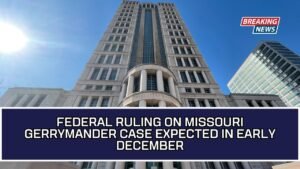Politics in Missouri has entered the spotlight as Governor Mike Kehoe announced a special session of the General Assembly to redraw congressional maps.
The move is designed to give Republicans more favorable districts before the 2026 midterm elections. While Republicans see this as a step to protect “Missouri values,” Democrats have called it a political power grab.
The debate is not just about Missouri—it’s part of a much bigger national redistricting fight that could shape control of Congress.
Why the Session Was Called
Governor Kehoe explained that the Legislature must act quickly to ensure congressional districts represent the interests of Missouri voters. He stated that Missouri’s values are more aligned across party lines than with the “extreme left” of states such as New York, California, and Illinois.
Since Republicans already hold a supermajority in both chambers of the state legislature, they are in a strong position to pass the new maps with little resistance.
Democrats Push Back
Despite being outnumbered, Democrats are not stepping aside. State Senator Doug Beck, the top Democrat in the Senate, accused Republicans of working under pressure from former President Donald Trump, who has openly supported redistricting efforts nationwide.
Beck promised Democrats would fight at every step, arguing that the GOP is trying to limit fair representation and silence opposition voices. His statement reflects how deeply partisan the battle over district boundaries has become.
Missouri in the National Redistricting Battle
Missouri is not the only state moving forward with partisan redistricting. Several states are making similar changes to protect their party’s chances in the 2026 elections.
| State | Recent Redistricting Action |
|---|---|
| Texas | Gov. Greg Abbott signed new maps, creating up to five new GOP seats. |
| California | Lawmakers passed a bill for voters to decide on new maps that could give Democrats more seats. |
| New York | Democrats introduced a bill allowing mid-decade redistricting, but it requires a constitutional change. |
| Utah | A judge ordered new maps after ruling the Legislature’s old ones were unconstitutional. |
These moves show that redistricting is no longer a quiet technical process—it has become a high-stakes political tool for both Republicans and Democrats.
What It Means for Missouri Voters
For everyday Missourians, the new maps could mean a big shift in who represents them in Washington, D.C. If Republicans succeed, the state could send more GOP lawmakers to Congress, helping the party keep or expand its slim majority in the U.S. House of Representatives.
However, Democrats argue that partisan maps may weaken fair representation, leaving many communities with fewer opportunities to elect leaders who truly represent their interests.
Why the Stakes Are So High
The 2026 midterm elections are shaping up to be one of the most competitive in years. Currently, Republicans hold only a small majority in the U.S. House.
Just a handful of districts could decide which party controls Congress. This explains why both parties are pouring energy into redistricting battles across the country.
For Missouri, the special session shows that the state is playing a direct role in shaping the future balance of power in Washington.
Missouri’s special session to redraw congressional maps is more than a local political fight—it is part of a larger national struggle for control of Congress.
With Republicans aiming to strengthen their majority and Democrats vowing to resist, the redistricting battle is set to intensify. For voters, the outcome will decide not only the shape of their districts but also the direction of U.S. politics heading into 2026 and beyond.




